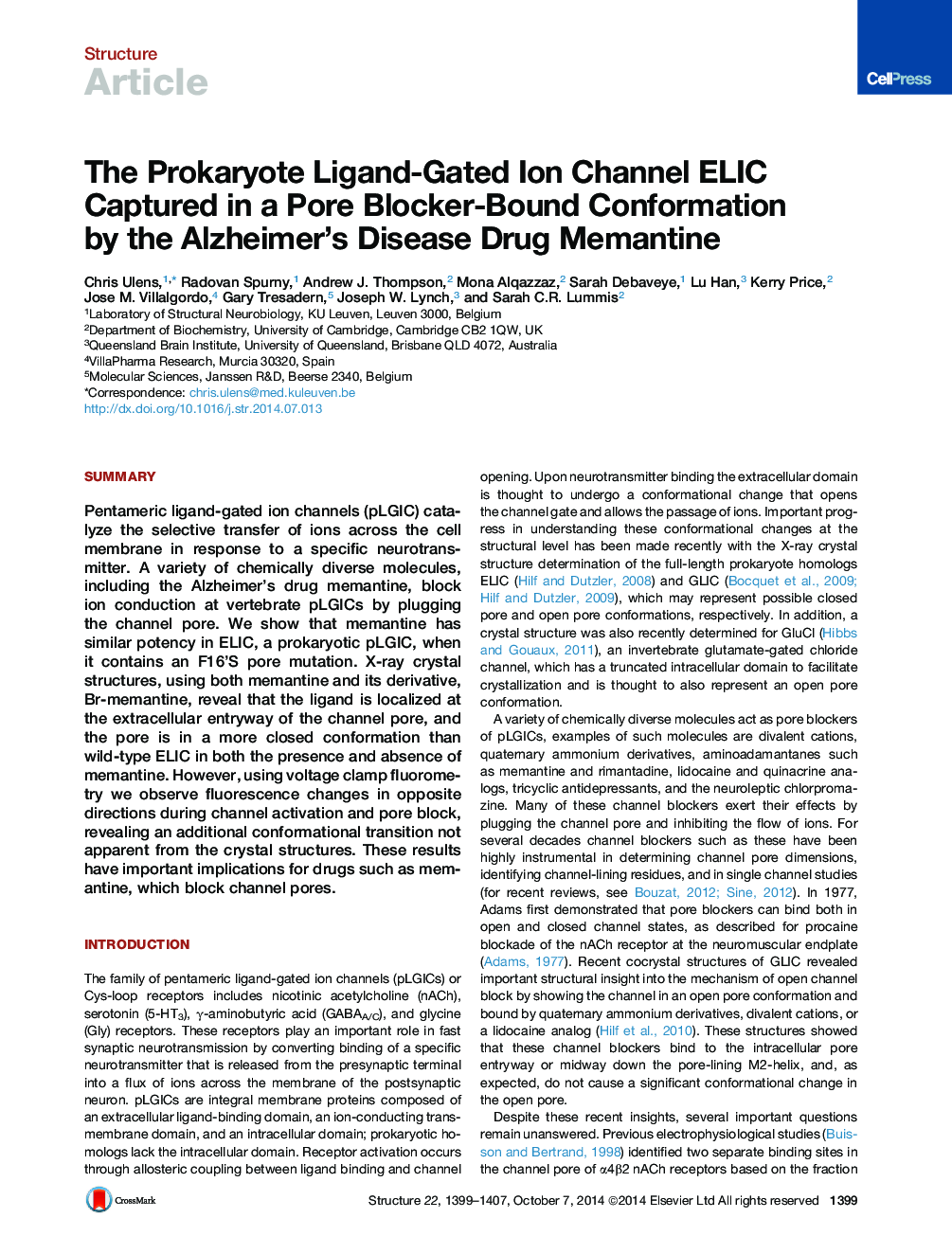| Article ID | Journal | Published Year | Pages | File Type |
|---|---|---|---|---|
| 2029682 | Structure | 2014 | 9 Pages |
•Memantine directly acts on pLGICs and NMDA receptors by plugging the channel pore•Mutation F16’S in the model channel ELIC reliably mimics the potency of memantine•Memantine binds at the extracellular entryway of the channel pore•VCF reveals a memantine-induced conformational change that differs from agonist
SummaryPentameric ligand-gated ion channels (pLGIC) catalyze the selective transfer of ions across the cell membrane in response to a specific neurotransmitter. A variety of chemically diverse molecules, including the Alzheimer’s drug memantine, block ion conduction at vertebrate pLGICs by plugging the channel pore. We show that memantine has similar potency in ELIC, a prokaryotic pLGIC, when it contains an F16’S pore mutation. X-ray crystal structures, using both memantine and its derivative, Br-memantine, reveal that the ligand is localized at the extracellular entryway of the channel pore, and the pore is in a more closed conformation than wild-type ELIC in both the presence and absence of memantine. However, using voltage clamp fluorometry we observe fluorescence changes in opposite directions during channel activation and pore block, revealing an additional conformational transition not apparent from the crystal structures. These results have important implications for drugs such as memantine, which block channel pores.
Graphical AbstractFigure optionsDownload full-size imageDownload high-quality image (265 K)Download as PowerPoint slide
